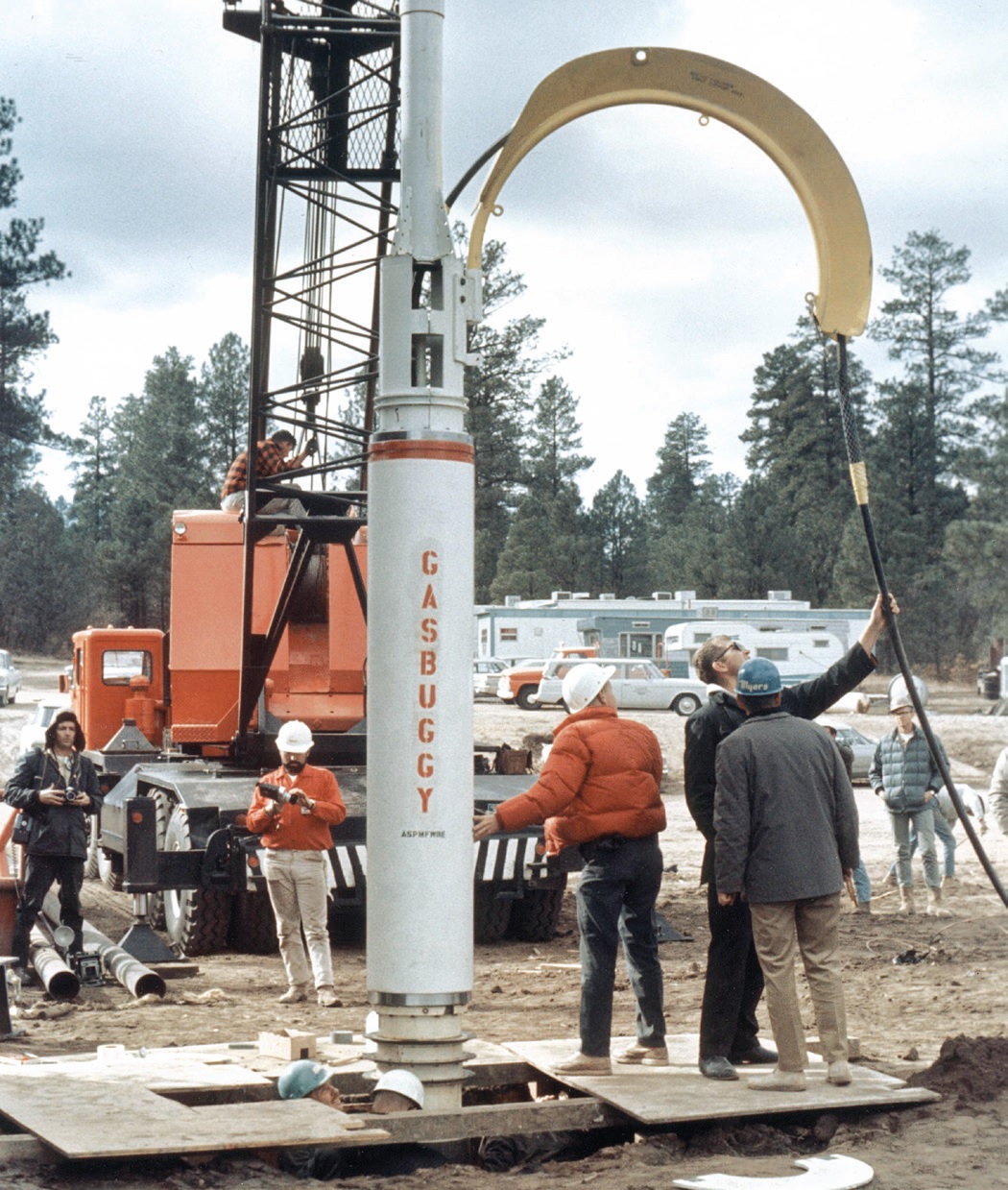Shooting the well
Evan Zabawski | TLT From the Editor September 2019
A whole new meaning to the term ‘oil boom.’

Operation Plowshare was established by the Atomic Energy Commission in 1957 to develop nuclear explosives for productive peacetime activities.
Photo courtesy of Wikimedia Commons.
People have been trying to stimulate oil well production for nearly as many years as they have been drilling for oil. One of the pioneers was Lt. Col. Edward A.L. Roberts, a Union Army officer who fought in the Battle of Fredericksburg where he was inspired to consider using water to tamp a downhole explosion after witnessing Confederate artillery rounds explode in a canal.
He formed The Roberts Petroleum Torpedo Co. with his brother Walter in 1865 and applied for a patent for his method to “sink a flask containing gunpowder or other explosive material or gas” down to the bottom of the well and fill the hole with water before igniting the contents of the flask. “The column of water then above the flask will be of so great gravity as to confine the effect of the explosion to the rock in the immediate vicinity of the flask, without materially affecting the stratums of rock above.”
Patent 59,936 was granted on Nov. 20, 1866, but antedated to May 20, 1866, which covered some of Roberts’ previous commercialization. One venture was documented in the July 2, 1866, issue of The Titusville Morning Herald where it described a June 21 experiment “with one of Roberts’ Torpedoes in the ‘Bakery Well,’ which has formerly pumped from seven to eight barrels per day. The production has continually increased. On the 27th it produced 60 barrels, and yesterday the production was 100 barrels.”
The method, known as shooting the well, was widely copied both due to its success and the exorbitant fee of $100-$200 per torpedo, plus one-fifteenth royalty on the increased oil flow. This led the company to take extreme measures to protect its rights, facing “ruinous costs” with “quite five thousand pending” infringement lawsuits to add to the already 2,113 suits filed. The company spent more than $250,000 on Pinkerton detectives and lawyers to stop the unlawful “torpedoists” or “moonlighters.”
After Roberts passed away, Walter and his son Erastus managed the company for three years before selling it to former employee Adam Culper, Jr., who renamed it The Culper Torpedo Co. It was later sold in 1937 to The Otto Torpedo Co. and renamed The Otto Culper Torpedo Co., which shot its last nitroglycerin torpedo on May 5, 1990.
Though the patent had long since expired, it had not faded into obscurity. In 1958 a geologist named Manley L. Natland from the California-based Richfield Oil Corp. was inspired by a sunset in Saudi Arabia; his thought was to detonate a nine-kiloton nuclear bomb underneath the Athabascan oilsands in Western Canada to heat the oil and cause it to seep loose where it could be pumped using conventional rigs. Citing Roberts’ patent, Natland filed his patent for “Process for Recovering Petroleum Utilizing a Nuclear Explosion” in 1963.
Though this may sound far-fetched today, Operation Plowshare was established by the Atomic Energy Commission in 1957 to develop nuclear explosives for productive peacetime activities, and Natland’s plan was approved under this program as Project Oilsand. Ultimately it never transpired, along with plans to blast an artificial harbor for Cape Thompson, Alaska, and a string of detonations for a highway project in California.
Three detonations that did occur were Projects Gasbuggy (1967), Rulison (1969) and Rio Blanco (1973), all aimed at stimulating natural gas deposits. Only Rulison succeeded in releasing deposits, an estimated 12.9 million cubic meters (455 million cubic feet), but tritium contamination rendered it unacceptable for public use. Funding for Plowshare was halted in 1975, coinciding with President Ford’s support of developing shale oil resources using hydraulic fracturing.
Although the use of downhole explosions has been effectively torpedoed, the improvements to horizontal (or directional) drilling have increased hydraulic fracturing usage exponentially since its first experimental success 70 years ago, and it is now the most popular technology for maximizing well production.
Evan Zabawski, CLS, is the senior technical advisor for TestOil in Calgary, Alberta, Canada. You can reach him at ezabawski@testoil.com.